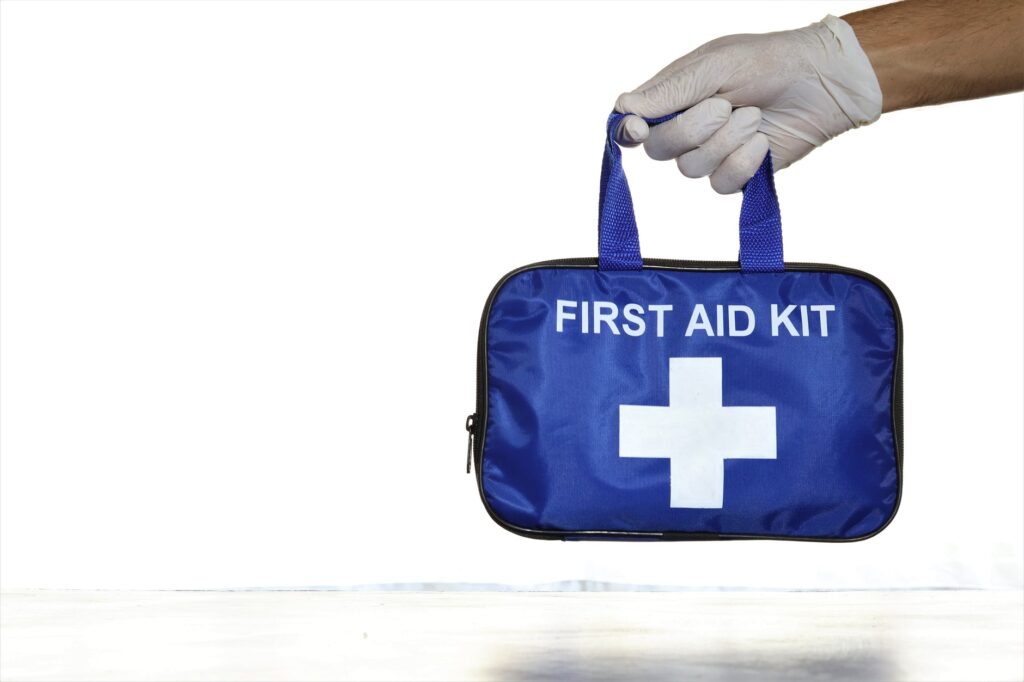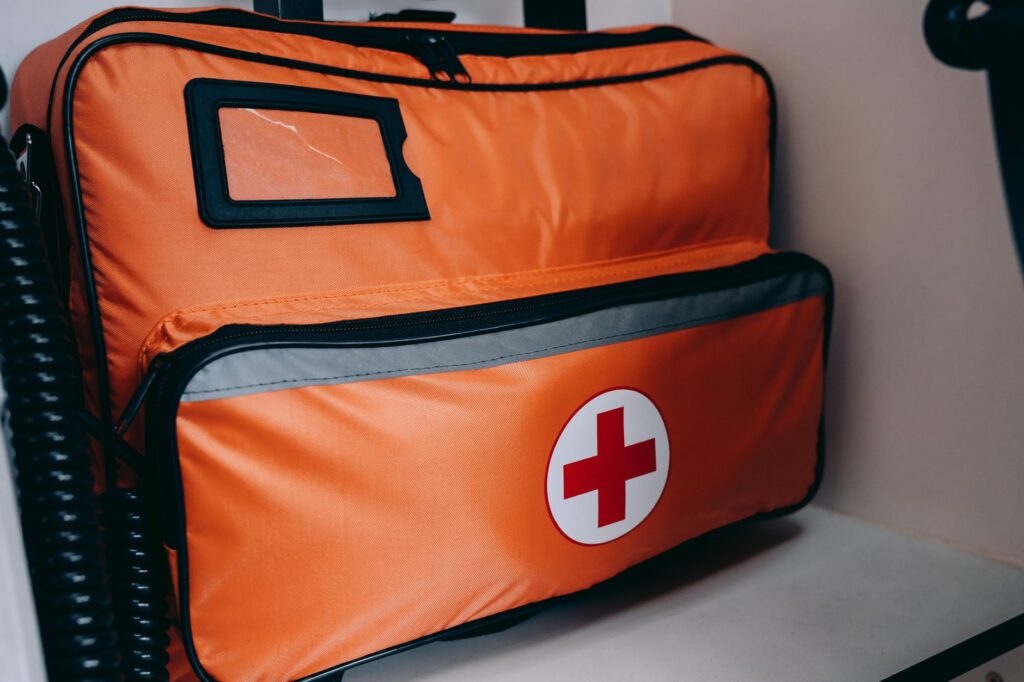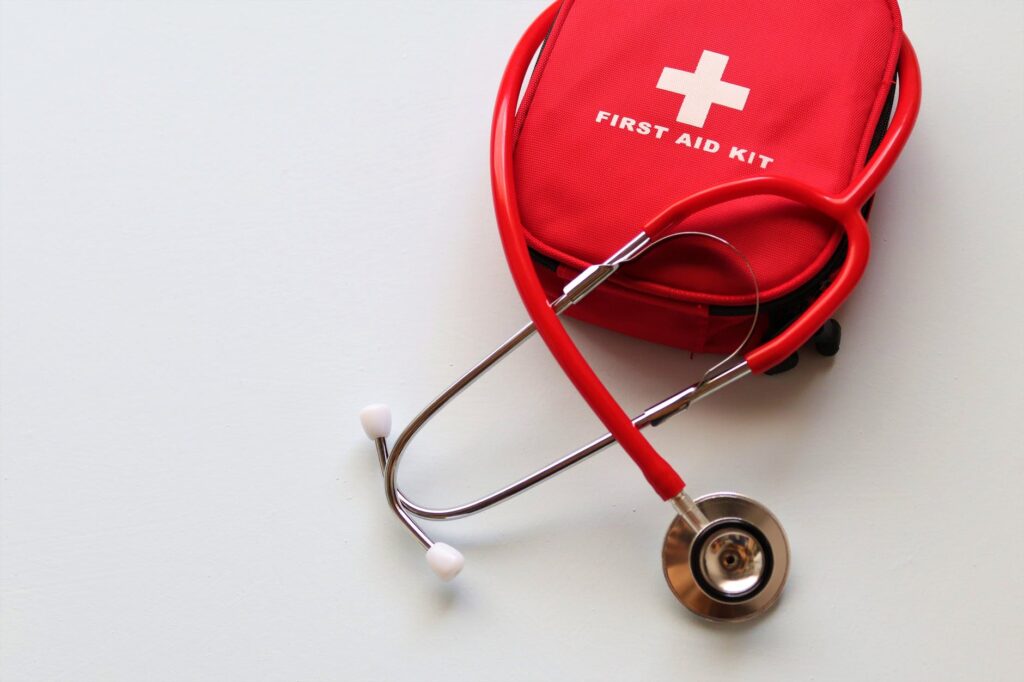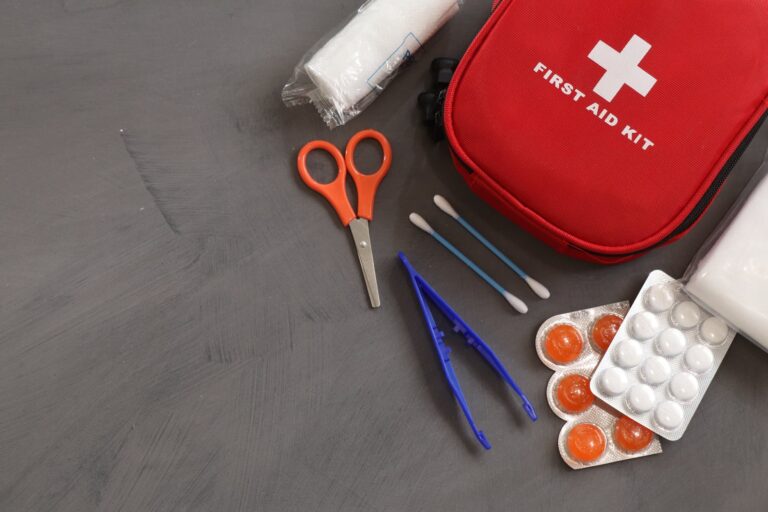Accidents are an inevitable part of life, and when they do occur, having proper first aid training and the necessary equipment on hand can promote optimal outcomes for the casualty or even yourself. Here are 8 must-have items that no emergency first aid kit should be without.
Triangular bandages
You’ll find that most standard first aid kits will include one to two triangular bandages, but in an emergency, you can never have too many. Aim to add a variety of extras, primarily larger ones. They can be used for a breadth of purposes including, but not limited to slings, snake bites, and to place pressure on an open wound.
Tourniquets
Most are familiar with the term ‘tourniquets’, but in case you aren’t, this is for you. Tourniquets are used on arms or legs to control massive bleeding. They are placed above the wound site and tightened to inhibit blood from escaping from the body. They can help to prevent the casualty from going into shock, and by administering them quickly when needed, you can potentially save someone’s life by stopping them from bleeding out. While you can use a shirt and rip it up to make a DIY tourniquet, this takes time, and if someone is suffering significant blood loss, time is something that isn’t on their side.

Trauma shears
First aid kits contain medical-grade scissors however, some of them have sharp tips, and the first aider may accidentally injure the casualty in the process of cutting clothing or similar when helping them. Trauma shears, on the other hand, are much safer and feature a blunted blade. Trauma shears have a serrated blade, which allows responders to cut through thick materials such as denim and jumpers fast and with little difficulty and is exactly what you need in emergencies. This enables you to treat injuries that are under clothing when the casualty is incapacitated and unable to assist in removing their clothes.
Disposable gloves
Even if you’re administering first aid to your family, you should always protect yourself and them from biological hazards. This can promote better healing by preventing cross-contamination and transferring germs to the wound site. While most first aid kits will contain sterile gloves, it’s not uncommon to use them up and then have the best intentions to replace them but forget. In you first aid training, you are always taught to have the gloves ready. You can also learn how to put them on without getting them dirty, which is really important.
Haemostatic dressings
Haemostatic dressings aren’t typically in an everyday first aid kit suitable for home use, but they can be extremely beneficial to treating bleeds that can be challenging to apply compression to, for example, the neck, groin and underarm. There are major veins in these regions, and if one of them is impacted and the correct first aid procedures aren’t applied quickly, the casualty is at risk of haemorrhaging to death. Haemostatic dressings are specially formulated and have a potent activator in them that encourages rapid blood clotting once packed into the site of the wound. They are dearer than regular dressings but last for a long time, and having them when you need them can be a lifesaver, literally!

Cling wrap
Yes, you read that right, cling wrap! It may seem like an odd thing to be used in an emergency, but it has many beneficial medical uses. One of the more common uses for it in terms of first aid is covering burns after you’ve cooled the wound with water for the recommended time. It can be used to immobilise dislocations, breaks, to cover open wounds, and can be used as a bandage in place of regular ones if you’re all out.
Saline
Saline is a standard first aid item, but it normally comes in small individual ampoules which is great for flushing out contaminants from the eyes. When you have a wound that needs washing out, these little portions aren’t going to cut it. Saline is so inexpensive and can be bought in larger quantities. We recommend having one 500ml bottle at the very least.
Defibrillator
Did you know that when a person suffers a cardiac arrest outside of hospital their chances of survival are less than 10%? The odds aren’t good. Every second a person goes without oxygen and blood pumping through their body, the worse the prognosis. While they are an expense, having one readily available allows you to treat the patient immediately rather than having to wait for emergency personnel, and in serious circumstances like this, it can be the difference between life and death. They are a good idea for workplaces and in homes of those with a previous cardiac history.

Don’t forget the basics
The 8 items we’ve mentioned above are additional extras that can help you treat someone in an emergency. They shouldn’t be the only methods of first aid you have rather used in conjunction with a first aid kit. Additionally, having a fully equipped first aid kit is one thing, knowing how to use the items is another. To be able to help someone properly in an emergency, you should have current first aid and CPR training. Here at The First Aid Shop, we have first aid kits for the home, work, camping, and so much more! Check out our collection online.
At the end, we can assume that we all need to take an online CPR course to receive certification quickly and easily. By following these steps you can be prepared for any emergency that may arise.

